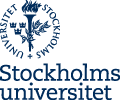Description
Topological superconductors (TSCs) are a newly discovered
class of superconductors with features uniquely advantageous
for quantum computing. They have recently raised
an immense amount of attention due to the possibility of
them hosting Majorana fermion quasiparticles at surfaces,
vortices, and other defects. Approximately one can
say that a Majorana fermion quasiparticle is half an electron,
or more accurately, in a material with Majorana fermions the
wave function of an electron has split up into two separate
parts. This non-local property of two Majorana fermions can
be used for exceptionally fault-tolerant quantum computing,
where disorder and decoherence, currently severely
hampering quantum computation, is automatically rendered
unimportant.
Our current work focuses on the presently most promising
TSCs in superconducting hybrid structures of well-known
spin-orbit coupled materials, as well as on discovering
new and experimentally feasible TSCs in especially graphene-
like materials. We have recently developed a computationally
highly efficient framework to study superconductivity self-
consistently in realistic lattice models. This allows us to
access important microscopic details in general hybrid
structures at an essentially unprecedented level. In this talk I
will show some of our recent results on vortices,
single magnetic impurities, and magnetic impurity wire
networks.
General references to the field:
J. Alicea, Rep. Prog. Phys. 75, 076501 (2012); Y. Ando
and L. Fu, Annu. Rev. Condens. Matter Phys. 6, 361 (2015).
Recent preprint: Bjornson and Black-Schaffer,
arXiv:1605.00696.
Author
Annica Black-Schaffer
(Uppsala University)

